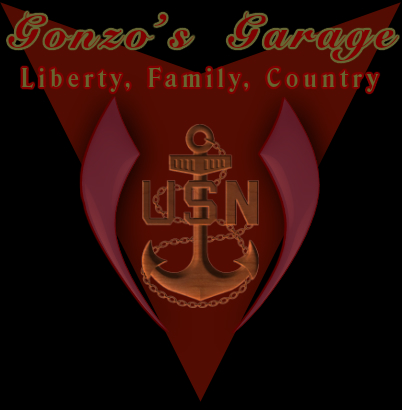 I'm a Member/Instructor with the Fort Collins
Community Emergency Response Team (CERT). As part of my CERT gear, I
wanted a comfortable helmet that would provide excellent bump
protection and was more flexible in its ability to allow for
attaching hands-free lighting, cameras, night vision, and other
accessories. I also wanted a helmet that would allow me to wear my
electronic hearing protection, which is also capable of giving me
greater listening abilities. This rig doesn't break the bank, and I
feel is a much more useful setup for CERT purposes than the standard
CERT issued helmet.
I'm a Member/Instructor with the Fort Collins
Community Emergency Response Team (CERT). As part of my CERT gear, I
wanted a comfortable helmet that would provide excellent bump
protection and was more flexible in its ability to allow for
attaching hands-free lighting, cameras, night vision, and other
accessories. I also wanted a helmet that would allow me to wear my
electronic hearing protection, which is also capable of giving me
greater listening abilities. This rig doesn't break the bank, and I
feel is a much more useful setup for CERT purposes than the standard
CERT issued helmet.
This is the standard CERT helmet that is issued
when new members receive their initial training and basic CERT gear.
This helmet does not come with a chin strap, and is a bit
uncomfortable. It also does not allow you to easily mount lights or
other equipment:
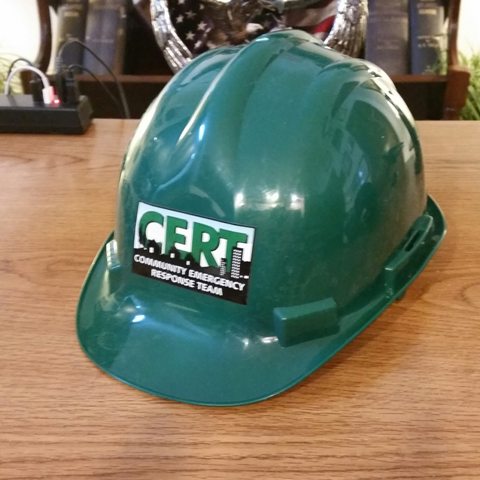
The helmet that I chose to replace the standard
CERT helmet is a Lancer Tactical CA-806B Maritime ABS Helmet. It
does not provide ballistic protection, but provides excellent bump
protection and a good chin strap. The helmet is much more
comfortable than the standard CERT helmet. I didn't feel that
spending $400 on an OpsCore helmet was warranted. I just hope I
won't be shot at while doing search and rescue. This helmet costs
less than $60 on Amazon:
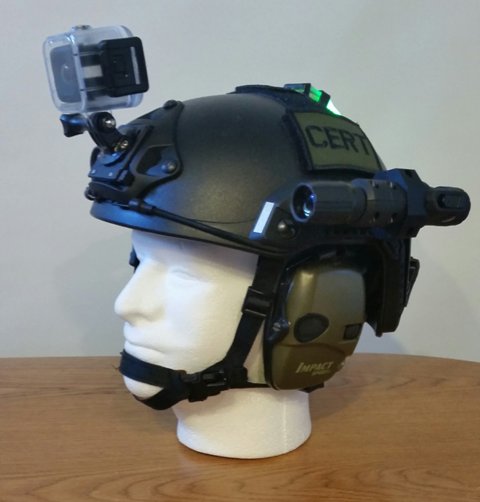
Properly documenting a scene, or recording
training exercises is important to me. I mounted a Polaroid Cube+ in
a waterproof case. While I don't plan on being 30 meters under water
during a search and rescue, this case also provides excellent camera
protection from other hazards. This camera comes with many
accessories and mounts. This particular mount was made especially
for mounting into a helmet NVG shroud. The video and audio quality
are excellent, and at a fraction of the price (and size) of a GoPro:
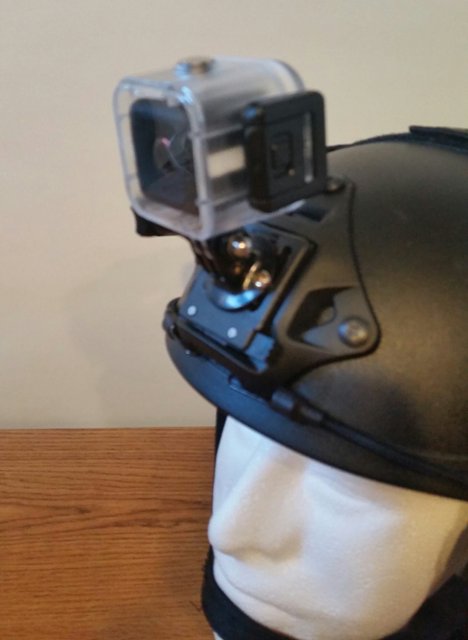
One of the things we teach in search and rescue
is to stop periodically and listen for movement, voices, or other
signs of life in the area being searched. Unfortunately, 20 years of
working on jet aircraft, and being on Navy aircraft carriers, not to
mention lots of rock concerts as a kid, have given me a world class
case of tinnitus. All I hear normally is very loud buzzing in my
ears. But this helmet allows me to wear my electronic shooting ear
pro, which has very good and crisp audio amplification, and helps
compensate for my hearing issues caused by the tinnitus. If I put
them on upstairs in my house, I can hear what's going on downstairs
in the kitchen. This ear pro sort of has a "white noise" thing going
on, which calms my tinnitus quite a bit. And if there are any sudden
loud noises, this ear pro greatly reduces the noise. This model was,
after all, made for shooting and loud sporting events:
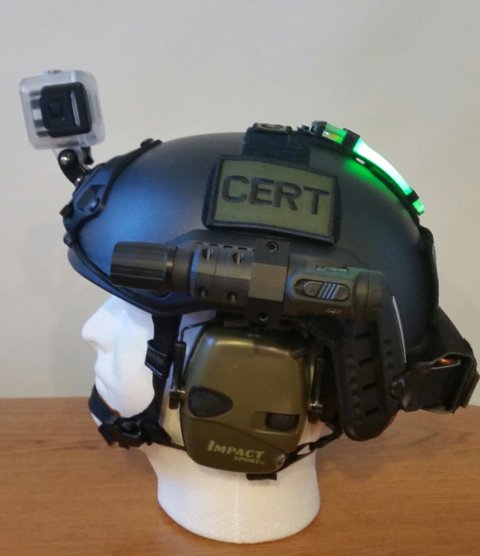
The illuminator on this side of the helmet is a
Sightmark IR-805 Compact Infrared Illuminator Flashlight. I use this
when wearing my night vision (which
you can see in this article). If
there is little or no ambient light, this illuminator will
illuminate the area with IR (not white light) so that I can see with
the NVGs. I could use a regular flashlight to illuminate the area,
but sometimes that is not practical, as it greatly interferes with
other people's regular vision in the dark:
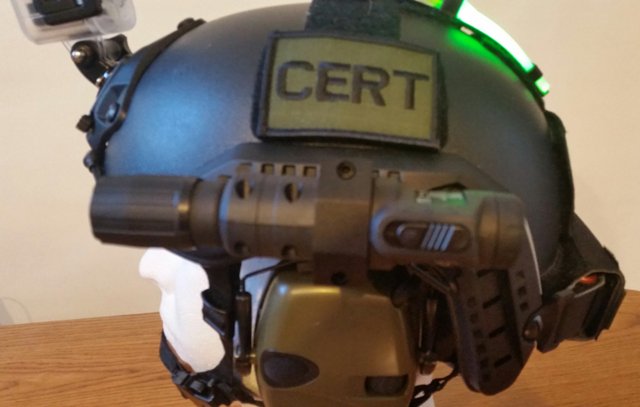
I want to be able to be seen by the rest of the
search team in a dark building. The light on top is an OSdream VLA
v-lite Helmet Fluorescent Light Rods/Camping Survival Light/Flashing
Light Lamp (green). They come in multiple colors, but I chose green
for the CERT role. You'll also notice the white stripes around the
helmet - those are 1/4" reflective tape strips:
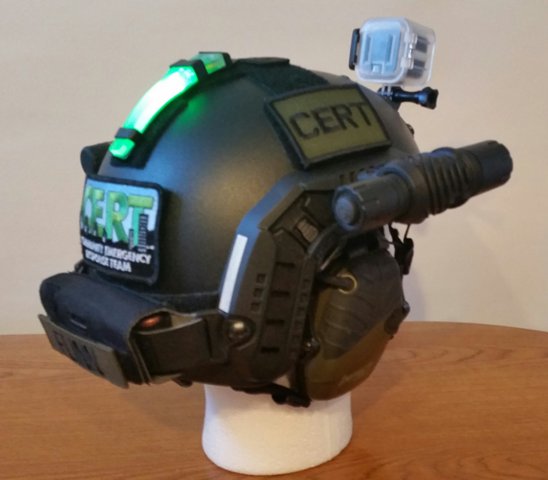
These helmets come with lots of Velcro. Comes in handy for
identification patches, name tapes, and other goodies. The
fluorescent light on top mounts with Velcro also:

The flashlight on this side of the helmet is a 350 lumen tactical
weapons light, mounted on one of the rails that mounts on this
helmet:
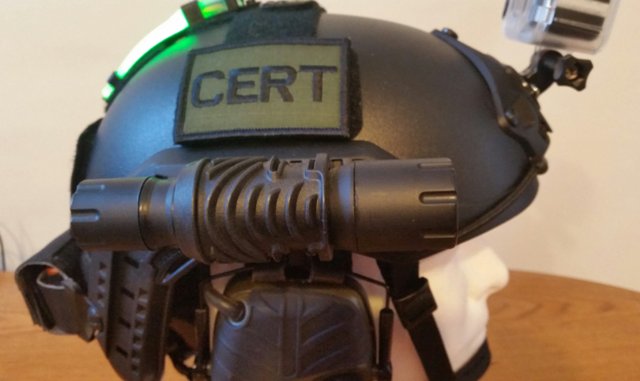
Not shown here, but even with the helmet and my
ear pro, this setup allows me to wear a wide variety of eye
protection easily and comfortably. You'll also notice the relative
size of the other equipment on the helmet. This is still a very
compact setup, which presents minimal catch or "bump" hazards that
would cause equipment to get knocked off of the helmet:
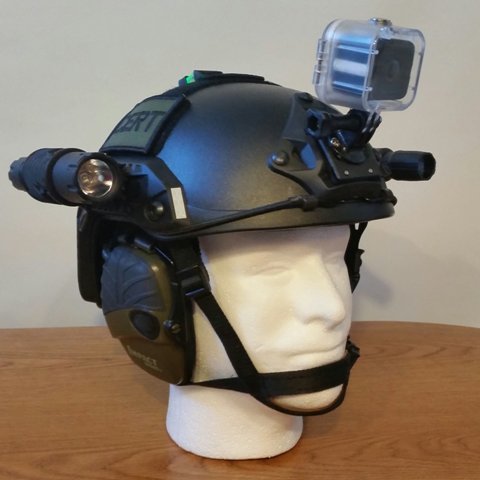
Looks like a lot of stuff. But it's not heavy or
bulky at all, and very comfortable to wear:
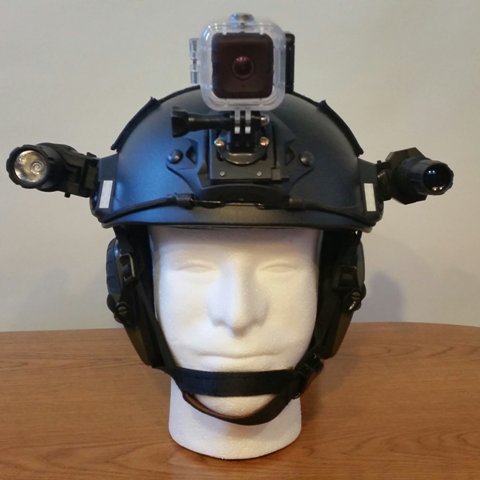
If I get seriously injured in a search and
rescue, I want the people helping me to be able to help me quickly.
I carry my personal first aid kit with me at all times, plus other
medical equipment. But I also have my blood type on my helmet and
elsewhere on my gear:
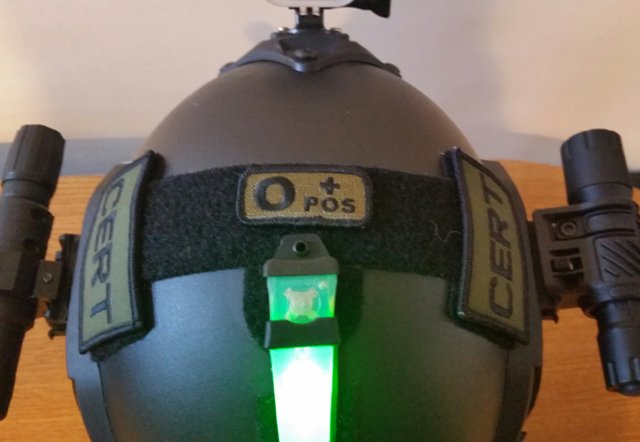
This pouch is normally used as a counter-weight
when wearing NVGs so as to balance the weight of the helmet. But
when I'm not wearing the NVGs, I take out the weights and put in
CR-123 batteries so as to have spares for my lights and other
equipment.
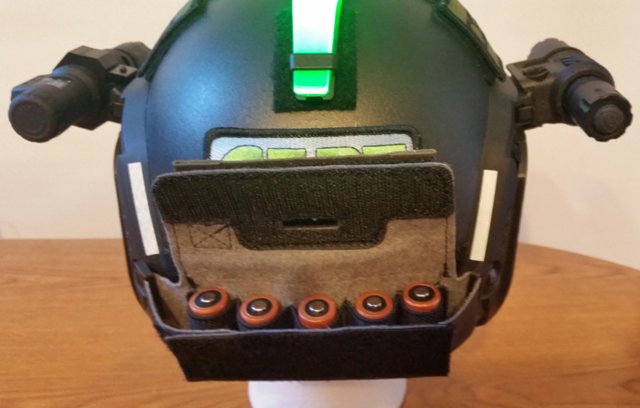
Download
This Article as a PDF Document

